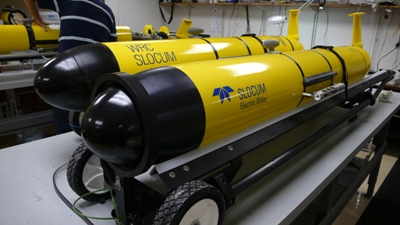Teledyne Technologies has announced that the U.S Navy has approved its subsidiary firm, Teledyne Brown Engineering, to move into the full rate production (FRP) phase on the littoral battlespace sensing-glider (LBS-G) program. The total value of the contract is estimated to be $53.1 million with the number of gliders to be supplied as 150.
 Littoral Battlespace Sensing-Glider
Littoral Battlespace Sensing-Glider
Recently, Teledyne Brown had delivered 15 Low Rate Initial Production Gliders to the Navy’s program Executive Office for C41, as required by the contract with Space and Naval Warfare Systems Command. The LBS-G gliders were developed and manufactured by Teledyne Webb Research, located at East Falmouth, Mass. The FRP requires 35 gliders to be manufactured with additional options for 100 more gliders. The design and development of the gliders was completed in August last year by a team comprising of Teledyne Webb Research, Teledyne Brown and University of Washington (Applied Physics Lab). After the completion of the design phase, Teledyne Brown received the Low Rate Production contract in December 2010.
The Chairman, CEO and President of Teledyne Technologies, Robert Mehrabian, regarded the U.S. Navy’s decision to choose their gliders as a validation of their reliability and affordable pricing policies. The Navy intends to make use of the deep and shallow water gliders to acquire critical oceanographic data in order to improve the positioning of the naval fleets during manoeuvres. These gliders use minimum power and last long. The LBS-G program has been built on the Slocum Glider from Teledyne Webb Research. The Slocum Glider is an unmanned underwater vehicle, shaped like a torpedo, measuring 2 m approximately. The glider moves through water by utilizing the changes in buoyancy along its wings and tail fin.